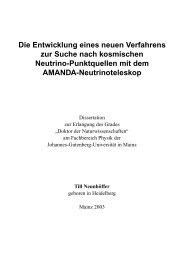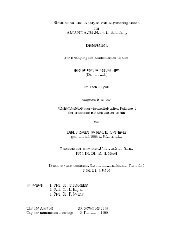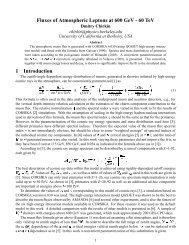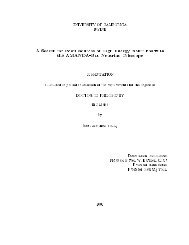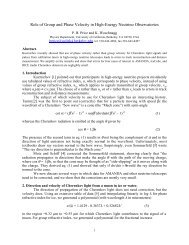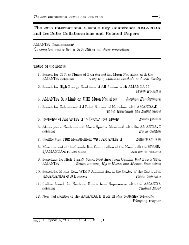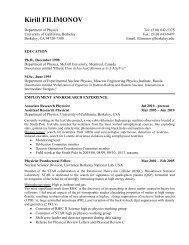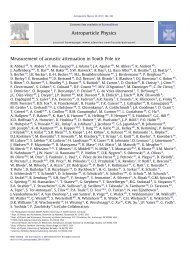Link to Fulltext
Link to Fulltext
Link to Fulltext
You also want an ePaper? Increase the reach of your titles
YUMPU automatically turns print PDFs into web optimized ePapers that Google loves.
where <br />
is in £<br />
© and ¢ <br />
<br />
¢ £<br />
¦ ¡ £§<br />
is given by the Bethe-Bloch formula [8]:<br />
<br />
£<br />
<br />
<br />
<br />
<br />
¨ © <br />
<br />
¢<br />
¤¢<br />
<br />
in which ¦ ¢ is the sum of the discrete processes’ contributions<br />
<br />
and the correction term (from<br />
¡ ¡<br />
knock-on electrons) causes the <br />
energy loss <strong>to</strong> become constant for , i.e. upon entering<br />
the Fermi plateau [30], which is reached at around 10 GeV for muons. Both ¢ and ¦ ¨¢ can<br />
<br />
be<br />
<br />
£ © © ¦ ¢¡ © £<br />
£ © ©<br />
approximated with constants. Typically and .<br />
By solving Eq. 32, we get the mean range of a muon starting with energy ¢ and decaying with<br />
<br />
energy ¢ :<br />
m<br />
10 4<br />
10 3<br />
10 2<br />
10<br />
1 10 10 2<br />
10 3<br />
10 4<br />
<br />
10 5<br />
18<br />
<br />
(33)<br />
<br />
10<br />
GeV<br />
6<br />
Figure 9: Mean range of a muon in ice as a function of its energy.<br />
¡<br />
¢ ¢ ¢ <br />
¦<br />
¢ ¡ ¢ § <br />
¡ ¢ § (34)<br />
¢<br />
¤¢ ¦<br />
©<br />
§¤£ ¢<br />
where is the critical energy above which s<strong>to</strong>chastic processes dominate ¤ over ionization.<br />
Below ¢ § , the muon range increases linearly with the muon energy, and above,<br />
<br />
it<br />
¢ ¢ <br />
is<br />
<br />
proportional<br />
¢ §<br />
<strong>to</strong> . When , the fluctuations are large and a Monte Carlo simulation £¢<br />
is necessary<br />
<strong>to</strong> take in<strong>to</strong> account the s<strong>to</strong>chastic nature of the energy loss.<br />
Since the muons considered here have high energies, so do the particles they produce during<br />
their propagation through ice. As a result, they are boosted in the same direction and the<br />
Cherenkov light they emit is sent out at an angle relative <strong>to</strong> the muon close <strong>to</strong> as well. The<br />
smearing induced is of the order of a few degrees (see [26, 31]).



